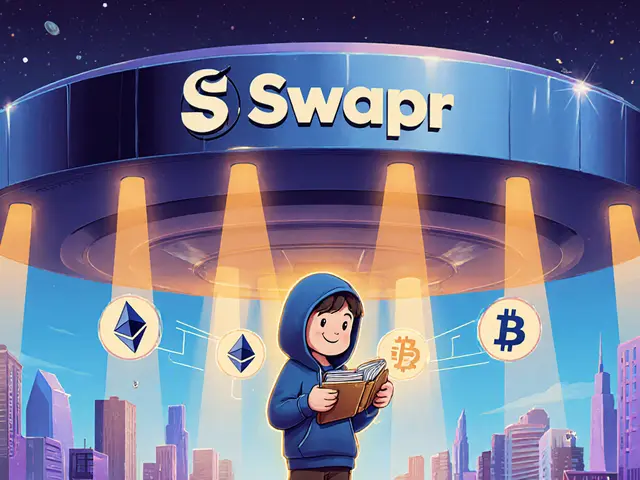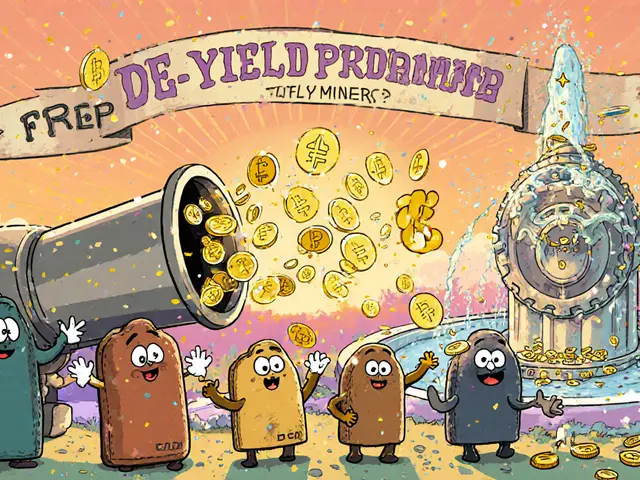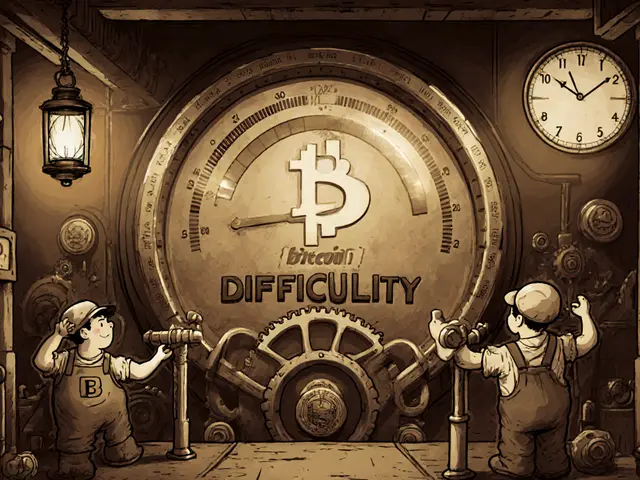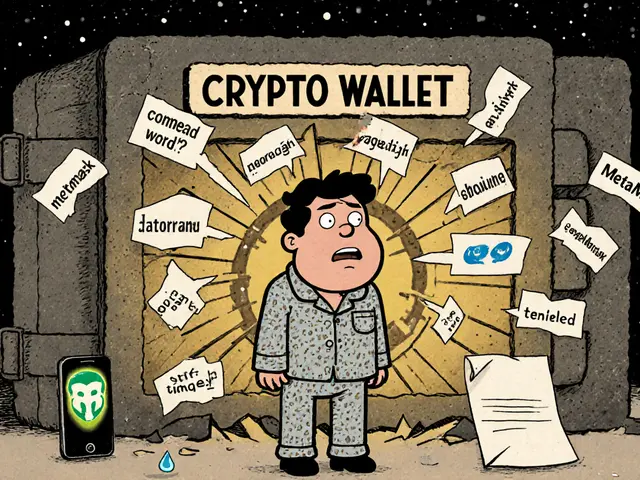
Enterprise DLT Platform Selector
This tool helps you evaluate which enterprise DLT platform best fits your business needs by matching your requirements against key features of leading platforms.
Did you know that more than 70% of Fortune 500 companies are already testing a blockchain‑like system to cut days‑long processes down to seconds? That’s the power of Enterprise DLT - a digital backbone that lets multiple organizations share a single, tamper‑proof version of the truth.
What is Enterprise Distributed Ledger Technology?
Distributed Ledger Technology (DLT) is a networked database where each participant holds an identical copy of the ledger and any change is cryptographically verified across the whole group. Unlike public blockchains that aim at anyone on the internet, enterprise DLT is built for known parties, uses permissioned access, and focuses on business‑grade performance rather than token economics. The first real‑world implementation was Bitcoin in 2009, but the shift to business use began when the Linux Foundation launched Hyperledger Fabric in 2015 as a modular, permissioned framework.
Core Benefits for Large Organizations
When you replace siloed databases with a shared ledger, you gain three measurable wins:
- Decision‑making speed increases by roughly 47% because all parties see the same data instantly (Fujitsu, 2022).
- Fraud risk drops by about 63% thanks to cryptographic signatures and immutable history.
- Operational costs fall up to 31% as manual reconciliation and middle‑man fees disappear.
Those numbers sound impressive, but they only materialize when the platform matches the organization’s workload, compliance needs, and existing tech stack.
Leading Enterprise DLT Platforms
Three platforms dominate the market today, each with a distinct focus.
- Hyperledger Fabric - Known for a pluggable consensus (PBFT, Raft) and a “execute‑order‑validate” flow that guarantees 100% finality. It supports 3,500‑10,000TPS on a 200‑node network and runs chaincode written in Go, Java, or Node.js.
- Ethereum Enterprise Alliance Besu - Provides full EVM compatibility, making it easy to port public‑chain dApps to a private setting. Besu’s privacy engine (Tessera) reduces gas costs by up to 87% compared with public Ethereum.
- Quorum - Tailored for financial services, it uses IBFT2.0 consensus to hit 20,000TPS with sub‑2‑second finality. Over 70% of the top‑50 banks have piloted Quorum for payments.
Architecture and Key Components
Enterprise DLT solutions share a common building‑block philosophy:
- Consensus protocols - From crash‑fault tolerant Raft to Byzantine‑fault tolerant PBFT, the choice determines throughput and fault tolerance.
- Identity management - Most deployments hook into LDAP or PKI, allowing granular access control and audit trails.
- Cryptography - SHA‑3, ECDSA, and newer BLS signatures secure transaction integrity; newer releases even experiment with quantum‑resistant algorithms.
- Data storage - LevelDB offers fast key‑value storage, while CouchDB adds JSON query capabilities. Approximately 43% of projects favor CouchDB for query flexibility.
All communication between nodes is encrypted with TLS1.3, and many financial‑sector deployments (78%) protect private keys in hardware security modules (HSMs).
Implementation Considerations
Going live with a DLT network is a multi‑month effort. Deloitte’s analysis of 147 case studies shows an average rollout time of 6‑9months, with the biggest delays coming from:
- Integrating legacy ERP or SAP systems - adds roughly 35% to project timelines.
- Developing and auditing smart contracts - teams need 8‑12weeks of specialized training.
- Designing data‑standard agreements - 67% of failed projects cite lack of common schemas.
Cost structures vary widely. Hyperledger Fabric itself is free, but professional services and infrastructure can run $150,000‑$500,000 for a midsize supply‑chain network. Managed services like Kaleido start at $2,500 per month, while Fujitsu’s Smart Document Management Solution (another primary entity) carries an annual fee of $75,000‑$200,000 depending on transaction volume.
Real‑World Use Cases
Here are three sectors where enterprise DLT has moved from pilot to production:
- Supply‑chain provenance - Walmart’s mango traceability system cuts verification time from seven days to 2.2seconds using Hyperledger Fabric.
- Cross‑border payments - Visa B2B Connect settles transactions in 4‑8hours, a huge leap from the three‑to‑five‑day bank‑wire norm.
- Digital identity - The Sovrin Network (built on permissioned DLT) issues 1.2million verifiable credentials daily, streamlining KYC for banks.
Note that ultra‑high‑frequency trading still struggles; a European bank’s $12M Quorum project fell short of the required 50,000TPS and capped at 8,200TPS after 18months.

Platform Comparison
| Platform | Consensus | Maximum TPS | Smart‑Contract Languages | Typical Use Cases |
|---|---|---|---|---|
| Hyperledger Fabric | Raft / PBFT | 10,000 | Go, Java, Node.js | Supply‑chain, trade finance, document management |
| Ethereum Besu | PoA / IBFT | 4,500 | Solidity, Vyper | EVM‑compatible dApps, tokenization, private asset trading |
| Quorum | IBFT 2.0 | 20,000 | Solidity, Java | Payments, inter‑bank clearing, securities settlement |
Risks and Challenges
The hype cycle has settled into Gartner’s "Plateau of Productivity," but several hurdles remain:
- Regulatory uncertainty - 63% of projects delay expansion because rules differ across jurisdictions, especially with GDPR’s right‑to‑erasure vs. ledger immutability.
- Performance limits - While 10‑20kTPS is impressive, it lags behind specialized databases like Oracle Exadata (2MTPS) and can increase storage needs by 37%.
- Complexity and vendor lock‑in - Forrester finds 55% of networks are dominated by a single validator, undermining the distributed promise.
Address these risks early with a clear governance model, hybrid architecture (combining DLT with traditional databases), and a roadmap for regulatory compliance.
Future Outlook
IDC forecasts the global enterprise blockchain market at $8.7B in 2023, growing at a 45% CAGR. By 2025, analysts expect 30% of large enterprises to run at least one production DLT process. Upcoming releases-Hyperledger Fabric2.6 with quantum‑resistant cryptography, Besu’s EEA3.0 standards, and expanding Visa B2B Connect coverage-signal a push toward mainstream adoption.
Long‑term, Deloitte predicts 80% of current DLT deployments will evolve into broader “trusted data ecosystems,” where the ledger acts as one layer among AI‑driven analytics and traditional data warehouses. However, Forrester warns that without solving cross‑platform interoperability, the market may stall at niche use cases by 2026.
Frequently Asked Questions
What distinguishes permissioned DLT from public blockchains?
Permissioned DLT restricts who can join the network and often provides instant finality, making it suitable for regulated industries. Public blockchains allow anyone to participate and typically rely on probabilistic finality, which can be slower and less predictable.
How much does a typical enterprise DLT project cost?
Open‑source platforms like Hyperledger Fabric have no license fee, but implementation-including consulting, integration, and hardware-often ranges from $150,000 to $500,000 for a mid‑size solution. Managed services start around $2,500 per month, while premium vendor offerings can exceed $200,000 annually.
Can DLT coexist with existing databases?
Yes. Hybrid architectures are common: immutable transaction logs live on the ledger, while high‑speed transactional data stays in a traditional database. This approach preserves performance while still gaining auditability.
What skills do my developers need?
Beyond standard software engineering, teams need knowledge of distributed systems, cryptographic key management, and smart‑contract security. According to an IEEE 2023 survey, only 28% of developers feel fully competent in these areas.
Is DLT ready for high‑frequency trading?
Not yet for most use cases. Even the fastest enterprise platforms cap around 20,000TPS, whereas HFT venues demand microsecond latency and millions of TPS. DLT can still add value in post‑trade settlement and compliance.





Comments (14)
Roxanne Maxwell
Really appreciate this breakdown - especially the real-world examples like Walmart’s mango tracking. It’s one thing to talk about tech, but seeing it actually cut 7 days down to seconds? That’s the kind of stuff that makes you believe in the potential.
Jonathan Tanguay
Okay but let’s be real - 90% of these enterprise DLT projects are just glorified shared Google Sheets with extra steps and a $500k consulting bill. Hyperledger Fabric? Sure. But when your CFO still has to manually reconcile between the ledger and SAP because the devs didn’t map the damn fields right - you’re not building a blockchain, you’re building a very expensive paperweight. And don’t get me started on ‘quantum-resistant’ algorithms being tossed in like glitter - we’re not even at RSA-2048 cracking yet and now we’re talking about post-quantum? Wake up. This isn’t innovation, it’s FUD-driven vendor bingo.
Elliott Algarin
It’s funny how we treat DLT like it’s some new religion when it’s really just a tool - a very specific tool for very specific problems. The real question isn’t whether it works, but whether we’re solving the right problem with it. Most companies don’t need a tamper-proof ledger; they need better data governance. The ledger just makes them feel like they’re doing something cutting-edge. Maybe that’s enough for now.
Akinyemi Akindele Winner
DLT? More like Dumb Ledger Tech. You’re telling me we’re paying millions to stop people from changing a spreadsheet? Meanwhile, half the world still can’t get clean water. This isn’t progress - it’s capitalism’s new magic trick. ‘Here, take this shiny chain of blocks and forget your rent is due.’
Patrick De Leon
Let’s not pretend this isn’t American tech theater. Hyperledger Fabric? Built by IBM and Goldman Sachs to lock out competition. Quorum? A Visa pet project. The whole ecosystem is just a backdoor for US financial hegemony wrapped in open-source branding. Europe’s trying to build something independent - but they’re too polite to fight back. Meanwhile, the rest of the world gets stuck with their leftovers.
Michael Folorunsho
Typical. Another article pretending enterprise DLT is a revolution when it’s just corporate vanity tech. You cite Fujitsu and Deloitte like they’re gospel, but have you ever met a consultant who didn’t push blockchain because it’s the only thing their client will pay for? 70% of Fortune 500s are ‘testing’ it? Yeah - like they’re testing a new coffee machine. No one’s actually shipping value. Just collecting grant money and writing whitepapers.
Ali Korkor
Don’t let the skeptics get you down. This stuff is hard, but it’s changing real things - like how banks settle trades or how food gets traced. If you’re building something that saves time or cuts fraud? That’s win. Start small, learn fast, and don’t try to boil the ocean on day one. You got this.
Ayanda Ndoni
So you spent 18 months building a 20k TPS system… and then realized your old Oracle DB could do 2M? And you still think this is worth it? Bro. Just use SQL. It’s cheaper, faster, and your IT team won’t quit. Why are we doing this to ourselves?
Zach Crandall
It is worth noting that the architectural elegance of enterprise DLT is fundamentally undermined by the sociopolitical reality of vendor capture. When a single entity controls the validator set - as Forrester correctly identifies - the distributed promise becomes a performative illusion. This is not decentralization. This is centralized control with blockchain aesthetics. One must ask: whose interests are truly being served?
MANGESH NEEL
Let me be blunt - if you’re using Solidity in an enterprise setting, you’re asking for disaster. Public chain devs don’t know what ‘audit’ means. They write code like it’s a rap battle. And now you’re trusting your supply chain to someone who thinks ‘require()’ is a suggestion? I’ve seen contracts that had more bugs than a Windows 95 install. This isn’t innovation - it’s negligence dressed in smart contract robes.
Sean Huang
Did you know the NSA quietly funded Hyperledger Fabric back in 2016? And that the same people who built Quorum used to work for the Pentagon’s classified data systems? This isn’t about efficiency - it’s about control. The ‘tamper-proof’ ledger? That’s just a way to make sure no one can ever erase the truth… unless the government says so. They’re building a global audit trail for everyone. You think Walmart’s tracking mangoes? They’re tracking YOU. Wake up. The blockchain isn’t free. It’s a surveillance tool with a fancy name.
Dick Lane
One thing people miss - the real win isn’t the ledger. It’s the conversations it forces. When your supplier, your bank, and your regulator all have to agree on what ‘shipped’ means… suddenly you start talking. That’s the hidden value. The tech’s just the thing that makes the talk happen.
madhu belavadi
Everyone’s excited about 20k TPS but no one talks about the 300GB of storage each node needs. My laptop can’t even handle that. And you want me to run this on a VM in a datacenter that costs more than my car? No thanks. I’ll stick with Excel and a prayer.
John Murphy
It’s funny how we call this ‘distributed’ when most networks have 5-10 nodes, all owned by the same conglomerate. The real innovation isn’t the tech - it’s the legal contracts that make it work. The ledger just automates what lawyers already wrote. Maybe we should focus on simplifying the contracts instead of over-engineering the database.